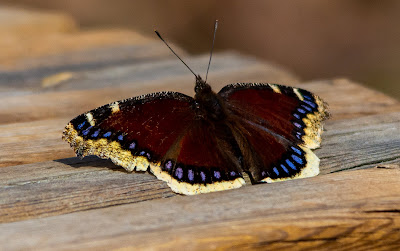Bugs for Birders: Learning to Love Invertebrates

Despite my diversity of interests, I have to admit to having a lifelong vertebrate bias. I've always been much more drawn to things like birds, mammals, reptiles, and their fossil kin than the all the creepy-crawlies buzzing and crawling around. In university I did take an invertebrate zoology course, but I took many more on vertebrates. I also have to admit to being more than a little squeamish around many bugs, worms, and other such animals. Shame, I know. Some people might argue that it's natural to have a backbone-bias, since vertebrates tend to be A. more noticeable to the human eye given their size and B. more similar to us in their biology (even things like fish have much more in common with us than insects, arachnids, and so on). You also hear it argued that we're evolutionarily programmed to feel repulsed by most invertebrates which might sting, bite, or infect us, however this doesn't seem to stop many human cultures and indeed other primate species from maki...
